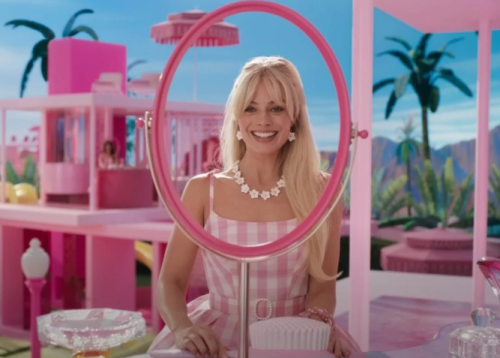
The role of play takes a significant role in shaping a child’s development, it lays a foundation for their future personality and adulthood (Brito & Gama, 2012). The introduction of the Barbie doll has ultimately revolutionized play by modifying the nature of playtime. Instead of only pretending to be a mother or daughter, Barbie encouraged a different type of play. This play is characterized by the role of companions or older friends. This is the result of Barbie’s introduction. Upon arrival Barbie already had a name, a personality and offered a complete and perfect pink world (Brito & Gama, 2012).
Over the decades, Barbie became an enduring symbol, which has contributed to societal norms around physical appearance (Brito & Gama, 2012). Despite the passing of time, Barbie has remained timeless and unchanged. Barbie has retained her youthful and slender physique, with wardrobe and accessories continuously evolving and following the current fashion trends (Brito & Gama, 2012). Barbie raises important questions about how females are represented, especially when it comes to the role of gender expectations in shaping identity. The impact that Barbie’s appearance and materialistic image has on young girls has been a topic of discussion, as her image presents a standard that very few women can reach (Wright, 2003).

Perfection in every aspect of life
Barbie is known for epitomizing perfection in every aspect of her life. She has perfect hair, the perfect boyfriend, a swimming pool, a house, car, clothes and body measurements and has created an utopian image (Uncu, 2019). This idealized perfection subtly communicates to young children with ages between 4 to 11, that to attain happiness and a wonderful life like Barbie’s, they must also strive to emulate her flawless appearance. This unrealistic standard has resulted in eating disorders and excessive consumerism amongst children and young adults (Uncu, 2019). Research by Dittmar et al., indicates that exposure to Barbie’s physique can lead to body dissatisfaction and contribute to development of eating disorders as well as anxiety (Dittmar et al., 2006; Uncu, 2019). When girls realise that their bodies do not align with the idealised and thin proportions of Barbie’s physique and hyper-feminine appearance, it can hinder their self esteem, impact their confidence, and have a negative impact on their self perception and body image (Dittmar et al., 2006; Uncu, 2019). The “Barbie effect” denotes the desire of young girls to reach Barbie’s unobtainable body measurements and proportions (Gaffney, 2017). While this mainly effects young adults, also adults desire to look similar to Barbie (Uncu, 2019).